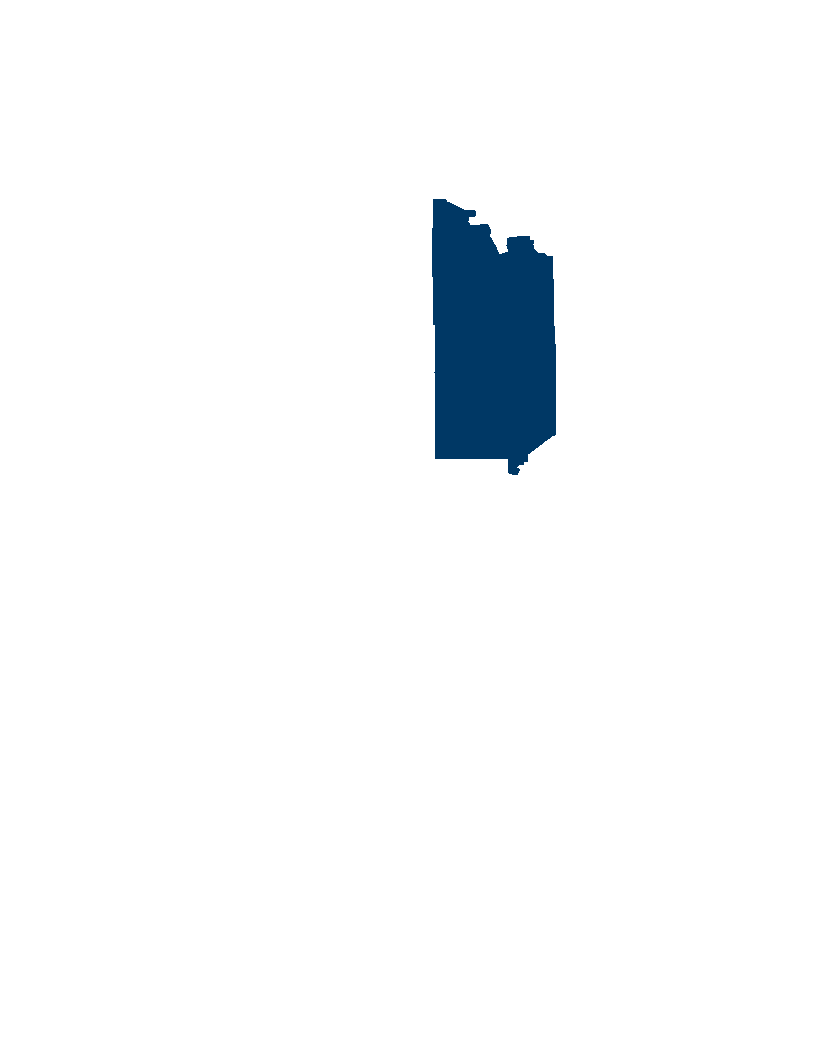Reconsidering Minnesota History through Dakota Narratives
Given access to resources & training, educators are in powerful positions to share stories of the people living on the land we call Minnesota. Through the work of Dr. Mato Nunpa, a team of Indigenous scholars & community interviews, Speaking Out Collective will examine how mass murder, wholesale land theft, enslavement and extermination were justified and taught in schools. By centering silenced Indigenous narratives, this project invites students, educators & districts to reconsider MN history.
2022-2023 Cultural Heritage and Community Identity Grants - Winter 2021
Goal 1 Outcomes
* By the end of the interview process, Dakota elders will report that interviews completed by SOC and contracted artists centered their voices.
* SOC staff and contract artists will complete an interview and documentation process that documents stories reflecting accurate Dakota history and contemporary culture that Dakota elders measure as valuable/important.
Goal 2 Outcomes
* SOC will create at least 10 core stories and lesson plans (40-60 minutes each) to be adapted for various age levels PreK-6th grade as developmentally appropriate both in length and lesson content.
* SOC will publish stories and curriculum on a website that will be available to all 553 districts in the state of MN
Goal 3 Outcomes
* After engaging with the new curriculum, at least 80% of Native American students interviewed/surveyed will report that they see themselves reflected in the curriculum in student surveys/interviews conducted by SOC staff.
* After engaging with the new curriculum, at least 80% of Non-Native students interviewed/surveyed will demonstrate better understanding of MN History from Dakota Perspectives by identifying new knowledge
Goal 4 Outcomes
* At least 50 classroom teachers (approximately 10% of all teachers reached by PD opportunities) will identify and describe specific gains in their understanding of MN History through Dakota Perspectives during interviews with evaluators or online surveys after sharing the curriculum with their classrooms.
* After engaging with the new curriculum with their students, at least 80% of classroom teachers interviewed or surveyed will report an increase in their comfort level of teaching complex topics surrounding the history of Minnesota.
Fifty+ interviews have been conducted to date. We changed the name to conversations'' to align with and showcase respect for the Dakota people we work with and their culture. These conversations have resulted in documentation of thirty-nine Dakota stories of which nearly half will be fully developed. They encompass a wide range of historical topics from important people and traditions, to foods and events such as the Treaty of 1805, Bde Psin, Fry Bread & Amaranth, and Fort Snelling and Coldwater Spring, just to name a few. In most instances, adjoining Google slides (many with videos) will be completed for use in the classroom. Our Native Vision Board of eight continues to monitor, contribute and advise the project. The Teacher Cohort has nine members and is actively working on classroom and professional development materials. The feedback and guidance received from our Native community, partner organizations, educators and teacher cohort have been invaluable and we anticipate partnering with them indefinitely.
Covid isolation and distance learning had a tremendous impact on students' social and emotional skills. Most elementary students are one to two years behind in their education fundamentals. For example, we have third to fifth graders who do not recognize all the letters in the alphabet. Combating these pandemic-induced deficits with the universal comprehension naturally infused in storytelling is allowing us to begin to move the needle in the right direction. When children began to express their stories in writing, pictures often moved into letter recognition and eventually words. We have found that we can use the overarching message in a story and apply it to how we want to work together in the classroom. How do we want to be in a community with each other? How can we observe the emotional cues from others? How can we create a community where everyone feels supported? How do we listen to things that might make us feel uncomfortable and breathe through the tension? How do we challenge things that we might have learned were true, but were hurtful to other communities; learning they weren't true at all? In one of our stories about the Walleye Wars'', this is directly addressed in the story itself. As the friends in the stories move through biases that were handed down from their families, they open their thinking and attitudes change. Posing such questions and providing positive, nonjudgmental space for student interactions with each other and group learning has begun to lessen some of the wide gaps we first encountered. Many of our teachers are learning along with us and the students. They help us see what knowledge students are lacking, and what we need to clearly define before finalizing stories and lesson plans.
We are working with twelve schools in multiple classrooms (PreK-5) and almost all of the students hadn't heard of a treaty, let alone knew what a sovereign nation was. This was the case even at our native school. Despite the fact that the 11 Tribal Nation Flags hang in the hallways of our schools, students don't have any understanding of what they are or represent. Where we tested this work, we first developed the foundational knowledge of a treaty. Before students could understand what it meant to break a treaty, they first needed to understand what it was. How were treaties negotiated? What were different kinds of treaties? Why does an oral agreement hold less impact than a written agreement for settlers? To date, 99% now know what a treaty is and have used the concept on the playground, in the classroom and/or at home.
Nearly every teacher has expressed their desire to teach Indigenous culture and histories in their classroom, yet cannot find any resources to assist them (despite the strong possibility of a statewide mandate to do so). This effort is timely and will fill a massive void. When teachers aren't confident about the curriculum that they have to find on their own, they unfortunately revert to doing nothing at all. We've learned that you always move at the speed of trust and follow the lead of your community partners. This lesson is deep in our bones. Everyone has stories. Everyone has the intellectual capacity to learn and sustain complex ideas. Everyone can successfully build relationships and trust. We have all been harmed by ideas of individualism and must work to change that. We as a community must invest in all backgrounds and take greater care to make sure we don't replicate harmful systems and patterns. We are committed to continuing to document not only Dakota stories, but all BIPOC stories missing from our collective knowledge base. We hope to have the U.S. history that's reflected in our textbooks, education system and memory be an inclusive representation of the diversity that is our nation. We know that we are on a living journey and relationships, exploration and documentation will continue to expand in what we now lovingly call our Truth Telling Series. ; We were thrilled to far exceed our goals. We developed a comprehensive curriculum for grades PreK-6 with 35 new stories at its core. These handcrafted stories told and written by local Indigenous people, often for the first time in English, weave a beautiful cultural and historical tapestry from the 1800's to present day. Stories in conjunction with lesson plans and accompanying classroom slides offer a wide variety of Minnesota history missing from our textbooks, classrooms and collective knowledge.
Ten Dakota cultural animal and trickster talesDance in a Buffalo Skull Unktomi wants to be part of the mouse dance party inside a skull, but gets himself into trouble when his head gets stuck inside.How Turtle Flew South for the Winter Turtle doesn't want to miss out on all the great things in the South, and asks the birds for help to fly. The Toad Boy A human baby is stolen by a toad and raised by her. The family searches for the child and is brought together again after many years. Unktomi and the Coyote Unktomi is surprised when his dinner isn't fully dead when he starts to cook. Unktomi and the Ducks Unktomi tricks the ducks so he can have a feast, but loses it all to some wolves.Unktomi and the Fawn Unktomi wants to be anyone but himself, no matter the cost. Unktomi and the Muskra: Unktomi doesn't want to share his food and challenges the Muskrat to a race. Unktomi and the Turtle Whoever can jump over the deer gets the food. Unktomi and the Buffalo the Eye-Juggler Unktomi wants to play the same game as the mice and with his efforts to excel at the game, he loses both his eyes. Unktomi's Blanket Unktomi gives a gift, but takes it back when he gets cold and suffers the consequences.One Anishinaabe cultural tale Maple Sugar. Wenaboozhoo reminds the humans that they need to work hard and can't live on sugar alone.Twenty-two Dakota historical fiction tales These stories are based on real things that occurred in history, but are set in contemporary times to improve point of reference and understanding.Uncle Earl and Joey go on weekend adventures in nature. Cottonwood Trees On this trip, Joey learns all about the Cottonwood trees. Pulled Over On this adventure, Uncle Earl and Joey experience racial profiling by the police. Mak' Pah' - Mounds Park Eastside resident Crystal Norcross tells her story about being drawn to the mounds, which sparks her activism with the City of Saint Paul to protect and restore the name of sacred burial grounds. Fort Snelling is told over three connected stories. Rachel's fourth grade class is going to take a field trip to Fort Snelling, but something doesn't feel right to her. She is Dakota and has heard how this sacred sight became a place of death and tragedy for her ancestors. Her teacher was unaware of this horrific history of land theft, forced march, and genocide. Coldwater Spring: Rachel's grandmother joins her class for a field trip to Coldwater Spring to give the class a Dakota perspective of the history of that site. Doctrine of Discovery Rachel brings in a photo of Pope Nicholas V for show and tell, and an exploration of the Doctrine of Discovery follows.AIM (American Indian Magnet) Rachel's homework is to interview a family member about activism, which she does with her Kunsi (grandmother). Water Protectors Rachel's mom visits her fourth grade class to tell the students about being a water protector.Pipestone History shares the history of the ceremonial pipe and the quarry.The Flicker and the Pipe is broken into five stories. A little bird learns about pipelines from trees, plants and other animals. Zitkala Sa shares details about the life of this Dakota teacher, writer, musician & composer.Anishinaabe TalesWalleye Wars is told in two stories about a young woman named Makwa who is Anishinaabe. It looks at the misinformation and tension between white settlers and Indigenous peoples.Tales that are shared experiences of many Native NationsBoarding Schools is told in two stories about a young girl's experience at a boarding school. Memories surface when a new batch of children come, including her younger sister. Fry Bread and Amaranth is told in two stories and explores the history of fry bread and the ways that our diet and food have changed over time.
Videos were filmed, created and edited by one Dakota and one Cherokee filmmaker. They feature the acclaimed Dakota Scholars Chris Mato Nunpa, Ph.D. and Crystal Norcross, with new Dakota words including spelling, meaning and pronunciation, detailed historical context and much more. Through the stories, curriculum testing and residencies, we were in 14 schools and one domestic violence shelter, and reached 1,570 children and 127 classroom teachers. Furthermore, professional development sessions were offered in Minneapolis, Bloomington, and Rochester school districts and we presented at several conferences including MIEA, University of Minnesota, Minnesota Council of Teachers Duluth, Minnesota Writing Project and Minnesota Indian Education Association. The latter, as an example, heralded the curriculum as a long overdue triumph. In total we reached approximately 350 more educators.
Just this year, the state released the requirement that Indigenous culture and history must be taught in classrooms with little resources to pull from. It is with great pride and honor that our Truth Tellers Dakota curriculum is being released to help fill that void. After engaging with the new materials, 90% of participating classroom teachers described significant gains in their comfort level and understanding of Indigenous history to teach in their classrooms. Students have been so engrossed that stories that were planned for multiple days are requested to finish in one sitting. Please, no! You can't stop there. We need to hear more!!! The reaction by all that had the opportunity to interact with this curriculum was overwhelmingly positive and students' interest in class was like never before.
An additional $69,000 from East Side Freedom Library and the National Writing Project was used for this project. These funds paid for a wide variety of expenses such as interviews/ conversations, scholars, community collaborations, ESFL staff and operating costs, graphic design and illustrations, meals and hospitality, printing and numerous stipends (i.e., Vision Committee, Teacher Cohort, partner organizations, etc.). SOC has provided in-kind support throughout the project. We could have easily had two-three FTE positions on this project versus none. The massive scope and resources required have confirmed that we will need additional staff and funding resources as we grow our BIPOC Truth Telling program.. Our partner East Side Freedom Library (via the National Writing Project and NEH) received an additional amount of $69,000 to pay for Indigenous conversations, scholar and elder payments in addition to contracted services, library staff and operations, food and printing. Without their support we could not have made this project possible. . Our partners, National and Minnesota Writing Project and East Side Freedom Library received additional funds for this project in the amount of $69,000. We also receive continuing in-kind support from our management consulting firm as well as employee hours not currently paid. The total amount is estimated to be apx. $50,000. We are actively engaged in seeking funds to continue this work into the next several schools years.
John Sessler (Treasurer) Education Consultant
Sandra Agustin (Secretary), Director of Creative Engagement, Inspire to Change
Emily Asp, Attorney, Stinson LLP
Sonja Baute, SOC, Interim Executive Director
Emily Zimmer, Speech Language Therapist, MPS, SOC Founding Member
Jack Zipes, Author, Critical Literacy Expert; Sonja Kuftinec (President)
John Sessler (Treasurer)
Sandra Agustin (Secretary)
Emily Asp
Rachel Austin Bernstein
Sonja Baute
Farhiya Del
Raegan Henderson
Laura Mann Hill
Patricia Lacy
Jack Zipes



